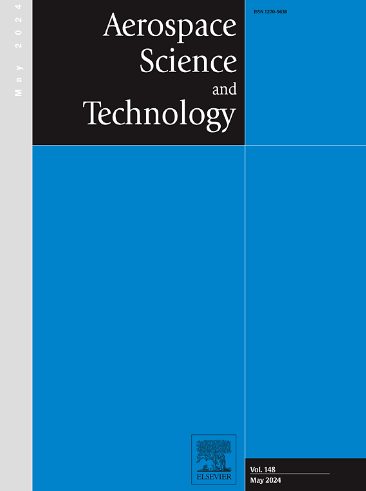高超音速飞行中细长钝头锥尾流中的非平衡等离子体分布及其对雷达截面的影响
IF 5
1区 工程技术
Q1 ENGINEERING, AEROSPACE
引用次数: 0
摘要
本文介绍了高超音速空气热力学的数值结果,这是航空航天工程中的一个重要领域,传统上侧重于返回舱,最近则侧重于细长型高超音速飞行器。返回舱通常需要进行近场分析,以评估热通量和压力分布,从而确定热保护系统的尺寸,而细长飞行器由于等离子体的存在,需要额外关注尾流动力学。等离子体会严重影响这些飞行器的雷达截面(RCS),由于其机动和持续飞行能力,在飞行过程中需要对其进行跟踪。利用计算流体动力学工具,我们探索了细长钝锥体周围的等离子体分布,考虑了滑翔或持续大气高超声速飞行的高度和马赫数状态,强调了等离子体对 RCS 的影响。我们的研究整合了一个空气热力学模型,其中包含气体成分和能量的非平衡弛豫方程。通过评估等离子体的特征量,我们强调了唤醒等离子体对后续电磁波分析的重要性,这对理解 RCS 至关重要。此外,我们还强调了计算流体动力学(CFD)和计算电磁学(CEM)学科合作解决这一具有挑战性的跨学科问题的必要性。本文章由计算机程序翻译,如有差异,请以英文原文为准。
Non-equilibrium plasma distribution in the wake of a slender blunted-nose cone in hypersonic flight and its effect on the radar cross section
This paper presents numerical results in hypersonic aerothermodynamics, a critical field within aerospace engineering, traditionally focusing on reentry capsules and more recently, slender hypersonic vehicles. While capsules typically undergo near-field analysis to assess heat flux and pressure distributions for Thermal Protection System sizing, slender bodies demand additional attention to wake dynamics due to plasma presence. Plasma can significantly affect the Radar Cross Section (RCS) of these vehicles, which require tracking during flight due to their maneuvering and sustained flight capability.
Utilizing Computational Fluid Dynamics tools, we explore plasma distribution around a slender blunted cone, considering altitudes and Mach number regimes that may characterize gliding or sustained atmospheric hypersonic flight, emphasizing its impact on RCS. Our study integrates an aerothermodynamic model incorporating non-equilibrium relaxation equations for gas composition and energy. By evaluating characteristic plasma quantities, we underscore the importance of wake plasma for subsequent electromagnetic wave analysis, crucial for understanding RCS. Furthermore, we highlight the necessity for collaborative efforts between Computational Fluid Dynamics (CFD) and Computational Electro-Magnetics (CEM) disciplines to address this challenging interdisciplinary problem.
求助全文
通过发布文献求助,成功后即可免费获取论文全文。
去求助
来源期刊

Aerospace Science and Technology
工程技术-工程:宇航
CiteScore
10.30
自引率
28.60%
发文量
654
审稿时长
54 days
期刊介绍:
Aerospace Science and Technology publishes articles of outstanding scientific quality. Each article is reviewed by two referees. The journal welcomes papers from a wide range of countries. This journal publishes original papers, review articles and short communications related to all fields of aerospace research, fundamental and applied, potential applications of which are clearly related to:
• The design and the manufacture of aircraft, helicopters, missiles, launchers and satellites
• The control of their environment
• The study of various systems they are involved in, as supports or as targets.
Authors are invited to submit papers on new advances in the following topics to aerospace applications:
• Fluid dynamics
• Energetics and propulsion
• Materials and structures
• Flight mechanics
• Navigation, guidance and control
• Acoustics
• Optics
• Electromagnetism and radar
• Signal and image processing
• Information processing
• Data fusion
• Decision aid
• Human behaviour
• Robotics and intelligent systems
• Complex system engineering.
Etc.
 求助内容:
求助内容: 应助结果提醒方式:
应助结果提醒方式:


